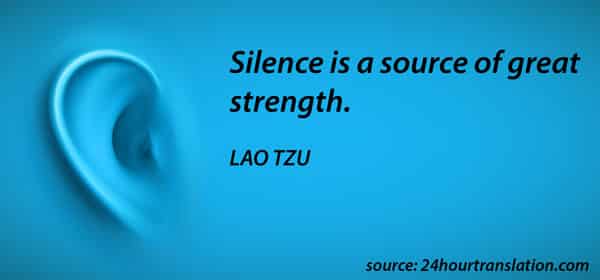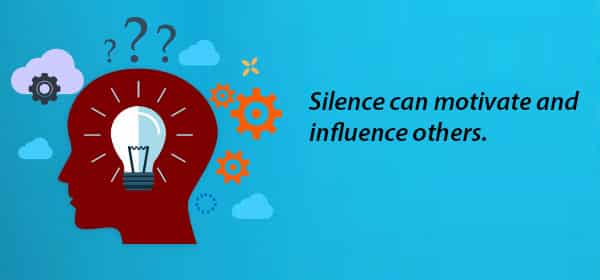As Americans, we often view silence as awkwardness instead of a business communication tool. For instance, during a live interview broadcast on radio or television, the reporter often includes non-verbal messages, such as nodding and other signs of agreement and support, in addition to verbal gestures of support, combined with follow-up questions and expressions that encourage guests to continue speaking. Some interviewers even add comments such as a mild grunt, an occasional “I see” or “that’s fascinating.”
Silence is a Powerful Tool
In our culture, we become so focused on filling areas of silence that we overlook how it can be used as a powerful tool. In many cultures, including our own, silence can project politeness, especially to avoid a social imposition, conflict, awkwardness, or even embarrassment to another party if verbal communication had been used. If asked to do something that you don’t want to do, remaining silent and ignoring the question can provide a subtle indication of apprehension and opposition, particularly in social settings or when the risk or threat seems great. For instance, a student may remain silent and wait until after class to confront an instructor who he believes has made a mistake.
Using Silence to Motivate
Using silence in team settings can also motivate others to participate. Instead of constantly interjecting our own ideas and thoughts, we can use silence to elicit feedback from others if we pause and leave openings for others. By displaying genuine signs of support, interest and approval through smiles and nods, we show support for open participation.
Using Silence To Control and Influence
In negotiations between two foreign parties, remaining silent can be used strategically as a business communication tool to exercise social positioning and control. As a Houston Translation services analyst explains, when submitting to questioning and interrogation, the respondent may assume power over the situation by refusing to answer. Furthermore, the person who is speaking can lose power over a situation when respondents refuse to answer and acknowledge the speaker. Thus silence used by different participants in social exchange can be used to influence power.
Many examples in international discourse and professional communication clearly demonstrate how silence can be used as a tool. Some situations include sales presentations, contract negotiations and business planning meetings. Effectively using silence, as well as reaping its benefits, is commonly practiced in management, coaching and mentoring.


